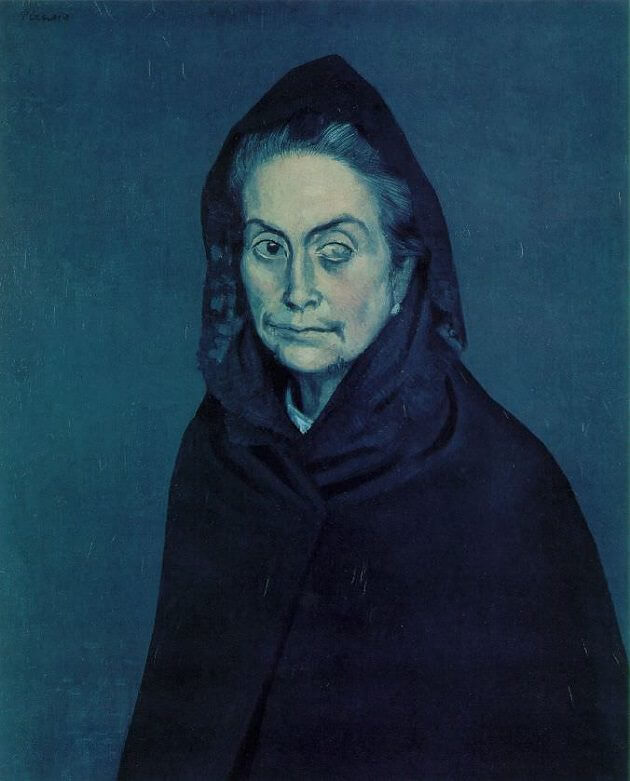Celestina, 1903 by Pablo Picasso

The fact that most of Pablo Picasso's works of the Blue Period were painted in Barcelona accounts for the resemblance of many of his models to figures by El Greco. His affinity with this master of Spanish Mannerism is apparent in the composition of Celestina, 1903, which dates from the beginning of the Blue Period.
The elongated proportions, the ecstatic and angular gestures, the relation between space and figures, all this brings to mind the great Spanish master, but the feeling in Picasso's works remains authentically his own. He makes use of El Greco's elongated forms and hallucinatory space, but he employs these elements to express a feeling peculiar to his time-solidarity with distressed, famished, oppressed humanity. Celestina is a superb example of this feeling and of the style in which it found its form: this portrait of an old one-eyed woman, dressed in somber color, achieves, thanks to the simplicity of its color and the economy of its line, an austere nobility which relates it to El Greco's most restrained portraits. From the same year, 1903, dates the enigmatic, symbolic composition entitled La Vie, showing a nude couple and a woman with a child in her arms; this painting, with its long, slender figures, has the same feeling of melancholy tenderness. But Celestina, above all, and the Old Guitarist, show Picasso's affinity with El Greco and the way he makes use of it to express his solidarity with, his active compassion for, the poor, to whom he belonged himself in that period of his life.
















